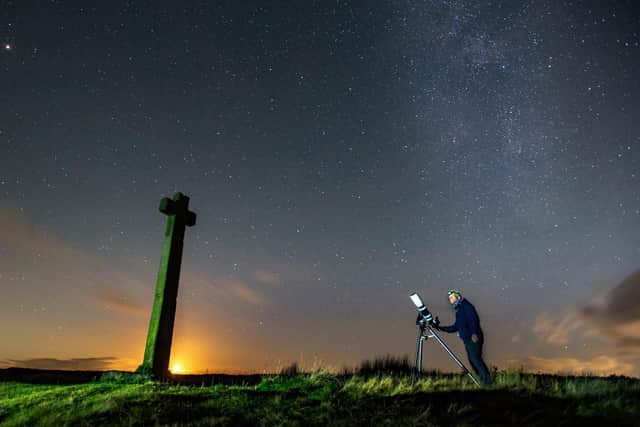North York Moors and Yorkshire Dales officially designated as Dark Skies Reserves
But both National Parks which cover some of Yorkshire’s most cherished landscapes are dwarfed by what lies above.
The Dales and Moors have become increasingly popular in recent years as locations for stargazing, and today (Dec 8) both National Parks have been officially designated as Dark Skies Reserves.
Advertisement
Hide AdAdvertisement
Hide AdThe announcement is the culmination of five years of work to secure the designations, and means both the Yorkshire Dales and the North York Moors join an exclusive club around the globe.


Other sites that have protected status include the Grand Canyon and Death Valley National Parks in the United States of America, Mont-Mégantic National Park in Canada and NamibRand Nature Reserve in Namibia.
Richard Darn, an amateur astronomer from Barnsley, has helped advise on both applications for the designations which have been awarded by the Arizona-based International Dark-Sky Association.
He said: “Being able to see the night skies in the National Parks is part of the experience, and it is such wonderful news that we now have these designations. In the North of England we have some of the darkest skies in the country, and this will help protect both the Moors and the Dales from light pollution.
Advertisement
Hide AdAdvertisement
Hide Ad“This is not about turning off the lights, it is about better quality lighting, and allowing people to fully appreciate the night skies above us.”
As part of a coordinated approach by the two National Parks, the International Dark-Sky Association has granted Reserve status to both areas, which combined cover more than 1,350 square miles of northern England.
It is by far the biggest such announcement in the UK and represents one of the largest areas in Europe to be simultaneously designated.
Clear guidance will now shape planning policies for both National Parks to minimise the effects of lighting in future developments, outlining the colour, intensity and how lights can be shielded. It is hoped future planning decisions will also reduce the unnecessary consumption of electricity and cut carbon emissions and energy costs for households.
Advertisement
Hide AdAdvertisement
Hide AdIt is also hoped that the new designation will provide a multi-million pound boost to the tourism industry. An annual Dark Skies Festival has been staged every February since 2016, bringing in thousands of visitors to both the Dales and the Moors at a time when the annual tourism cycle is at its quietest.
A study released earlier this year revealed that dark skies tourism in Northumberland, which received its own designation in 2013, is worth as much as £25m each year.
Jim Bailey, the chairman of the North York Moors National Park Authority, said: “From helping nocturnal wildlife to providing a boost for off-season tourism, the North York Moors looks set to have a better, darker future.”
Neil Heseltine, the chairman of the Yorkshire Dales National Park Authority, added that he was “thrilled” the area has now received official recognition for “one of its most special qualities”.
Comment Guidelines
National World encourages reader discussion on our stories. User feedback, insights and back-and-forth exchanges add a rich layer of context to reporting. Please review our Community Guidelines before commenting.